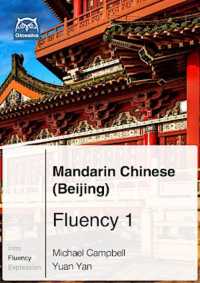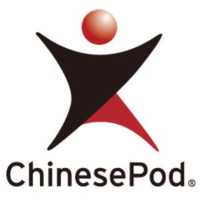27 Best And Worst Online Chinese Courses For 2023
 Written byZoe Mei
Written byZoe Mei- Read time22 mins
- Comments11

Finding the best online Chinese courses (Mandarin) can be stressful.
It’s a saturated market - there are so many options available that it’s overwhelming!
Mandarin Chinese is one of the most important languages in the world for business and global trade. In fact, so much so that I believe all schools should be teaching it to young people.
In addition to business and career advancement, Mandarin Chinese is becoming more and more popular as tourism to China increases (it’s a gorgeous country with a rich history that people are eager to explore).
Plus there are many Mandarin Chinese speakers in the US, Australia and Europe to converse with!
Today I’m going to share the best (and worst) of all the popular online Chinese courses for you (I know them all very well).
I’ll give you my thoughts as a Mandarin speaker.
Below you’ll find my pros and cons for each course, pricing and a brief summary. There are also links to various reviews on this site for some of the courses below.
Enjoy!
Table Of Contents
- Rocket Chinese
- Chinese Uncovered
- ChineseClass101
- Yoyo Chinese
- MandarinHQ
- Glossika Mandarin
- Pimsleur Chinese Mandarin
- Mondly Chinese
- Mandarin Blueprint
- Yabla Chinese
- FluentU
- ChinesePod
- TutorMing
- Rosetta Stone
- Ninchanese
- Mango Languages
- Coursera Online Chinese courses
- Mimic Method (Mandarin Chinese)
- Lingodeer
- Decks
- Coffee Break Chinese
- ChineseFor.Us
- Hello Chinese
- Duolingo Chinese
- Michel Thomas Chinese
- Busuu
- FSI Chinese
DISCLAIMER: The comments below are personal opinions.
The best Mandarin Chinese courses online (most popular Chinese resources)
1. Rocket Chinese

Cost: Starts from $99.95 (auto-applied discount)
Summary: There are few, if any, Chinese courses as comprehensive as Rocket Chinese. This three-level program is perfectly suited to Mandarin students looking for structure - it walks you from the absolute basics right through to an advanced level of Chinese. This course option is at the top of my recommendations for Mandarin Chinese learners.
It has a mixture of podcast and pure dialogue delivery.
The Rocket Chinese courses are made up of podcasts that teach Mandarin in a fun, clear and easy-to-follow way, but there also natural dialogues and other content delivery styles within the different course levels. Rocket Chinese’s three course levels cover all language skills equally well (including reading and writing Chinese characters)
They have an inbuilt voice recognition system too which is fairly accurate (Google’s Web Speech API).
You also don’t have to learn in a linear progression but can choose your own path if you prefer to.
If you’re looking for an all-in-one Mandarin Chinese course option, Rocket Chinese should be your first stop.
Read this popular Rocket Chinese review.
What I like:
- 3 full, comprehensive levels taking you from beginner to advanced in Chinese
- Course is perfect for learners who want structure in their learning as it has a very linear progression
- Courses cover Speaking and Listening, as well as how to read and write Chinese characters
- Course includes an active leaderboard and forum community
What I don’t like:
- Would be great to include a video library for visual learners
Join The Guild by clicking here, select Mandarin Chinese and I’ll send you a unique offer for Rocket Chinese exclusive to my readers only.
2. Chinese Uncovered (StoryLearning)

Cost: One time purchase of $297.
Summary: Chinese Uncovered is another unique way to learn Mandarin Chinese. Olly Richard’s program begins by immediately throwing you into an easy Chinese story and you learn through a “Guided Discovery” method, which includes classes with a native Chinese teacher.
Instead of just learning about grammar rules, learners come across them through fictional narrative. It provides a fun and unique way of learning a language, though is slightly expensive.
What I like:
- Unique story-based method
- Clear instructions with lots of practice
What I don’t like:
- May appear overwhelming for new learners
- Seemingly unrelated grammar points thrown into lessons
- Expensive
See this Chinese Uncovered review.
3. ChineseClass101

Cost: Starts as low as $4 a month.
Summary: ChineseClass101 is a really popular online resource for learning Mandarin Chinese. Less of a structured course, and more of a mishmash of topic-based podcast lessons, this is a great option for anyone heading to China.
ChineseClass101 uses audio lessons that are very similar to podcasts.
The lesson content ranges from absolute beginner through to advanced. It’s a particularly good course option for honing listening skills, but also incorporates all essential vocabulary and grammar with loads of other useful features.
What I like:
- Tonnes of Chinese course material at lower levels
- The more you advance, the less English is used
What I don’t like:
- Content choices are a little more sparse beyond the beginner level
- Excessive English spoken at the lower levels
- Site is slightly overwhelming with clunky navigation
UNIQUE OFFER: Use the code MEZZOGUILD to save 25% on any of their Mandarin course options.
4. Yoyo Chinese

Cost: Starts at $129 for the Beginner course, or $299 for the complete package.
Summary: Yoyo Chinese has been around for a long time and is one of the most popular, well-respected course platforms for learning Chinese.
The Yoyo Chinese courses are enjoyable and really easy to follow with really clear explanations.
What I like:
- Yangyang (the host and founder) has a fun and charismatic personality - her lessons are fun and enjoyable
- Bitesize lesson format that doesn’t overwhelm
- Well-structured Chinese course
What I don’t like:
- Too much English
- Clunky, dated interface
- Price is at the high end for a course of its type
UNIQUE OFFER: Use the code MEZZOGUILD10 to save 10% on any of their course options.
5. MandarinHQ

Cost: $87 one-time fee.
Summary: Angel has done a superb job putting together this Chinese course.
Its main strengths are the high quality videos and the fact that unlike other course options, it has a one-time, inexpensive fee to join.
What I like:
- One-time, inexpensive payment (no subscription!)
- Angel is a wonderful presenter and explains everything very clearly
- High quality videos
- Effective high-repetition approach that works
What I don’t like:
- Not as comprehensive as other Chinese course options
6. Glossika Mandarin

Cost: $30 a month.
Summary: Glossika’s one of the most unique and powerful learning tools available for learning Mandarin Chinese. Its founder, Mike Campbell, is a fluent Mandarin speaker and the team is based in Taiwan. This Chinese course uses a unique learning algorithm that trains listening and conversational fluency. It comes with a 7-day free trial, but then has a $30 a month fee.
Suitable for all levels of Mandarin, though lower-level learners may find it difficult to understand in the beginning.
See this massive Glossika review and interview.
What I like:
- Uses an intuitive, unique learning approach
- The subscription allows you to learn other languages including Mandarin Chinese
- Focuses on heavy repetition
What I don’t like:
- May be difficult to grasp for new learners
- It doesn’t include any notes on grammar (which may not suit everyone)
- Slightly higher priced monthly subscription
7. Pimsleur (Mandarin Chinese)

Cost: $14.95 a month subscription (or $119.95 per level)
Summary: Pimsleur’s a timeless favorite for learning Mandarin Chinese using spaced repetition recall. The lessons focus on practical vocabulary and expressions one might need in various scenarios. This includes greetings, common phrases, and vocabulary you might need when visiting China.
The Pimsleur method prepares you for the necessary Mandarin you need to get by visiting China in a short period of time. This is one of the best online Chinese courses despite its age, and is an affordable program that can be subscribed to, or buy the full program which includes 30 lessons for $119.95.
Read this Pimsleur review.
What I like:
- Pimsleur is a timeless masterpiece that is based on solid research in second language acquisition
- The course only requires 30 minutes a day of studying
- There is a lot of listening and repeating phrases for easy memorisation
What I don’t like:
- Outdated scenario examples
- Too much English
8. Mondly (Chinese)

Cost: Starts at $9.99/month.
Summary: Mondly offers courses for loads of different languages and is similar in style to Busuu, Duolingo, and Babbel. You can even see hints of Rosetta Stone in its lesson delivery style.
It’s a beautifully-designed web app and a pleasure to navigate the course content.
Some of the non-European courses aren’t that great (e.g. Arabic) but Chinese and others are done well.
What I like:
- Beautifully designed
- Great for learning a lot of vocabulary
- Daily lessons, weekly quizzes, monthly challenges
- Vocabulary drilled effectively
What I don’t like:
- Can feel tedious going through the motions of the repetitive lesson styles
- Doesn’t feel unique compared to competitors
Read this Mondly review.
9. Mandarin Blueprint

Cost: $39/month, $399 annually or $799 lifetime payment.
Summary: Normally I’d hesitate to include a Mandarin Chinese course that isn’t made by native speakers, but for Mandarin Blueprint I can make an exception.
This is truly an outstanding course that covers everything you need to learn Chinese. Videos are extensive and excellent quality.
It’s a little on the pricey side but if you’re serious about learning Mandarin Chinese, I highly recommend it.
What I like:
- Thoroughly comprehensive
- Produced by advanced learners who understand student struggles
- Extremely high quality video library and lesson material
What I don’t like:
- Developed by non-native speakers of Chinese
- Slightly expensive
See this Mandarin Blueprint review.
Use the unique discount code MG_20OFF for a 20% discount.
10. Yabla Chinese
Cost: Starts at $12.95 a month
Summary: Yabla Chinese was the first of its kind - an online Chinese course that uses interactive video.
It has an enormous library of content that most Chinese students will never find insufficient.
See this massive review of Yabla.
What I like:
- Enormous collection of Chinese videos to learn from
- Very affordable
- Well-established company with a solid reputation
What I don’t like:
- Slightly dated interface
11. FluentU Mandarin

Cost: Starts at $30 a month
Summary: Basically a derivative of Yabla - FluentU has been around for a long time and came after Yabla.
It has a newer interface but is far more expensive than Yabla.
See this detailed review of FluentU.
What I like:
- Sleek interface
- Large library of content for Chinese learners
What I don’t like:
- Expensive compared to Yabla (its main competitor)
- Aggressive marketing
12. ChinesePod

Cost: Starts at $14 a month
Summary: ChinesePod have been a really reputable, Hong Kong-based Chinese course provider for a long time.
My only issue with ChinesePod is that navigating their enormous collection of Chinese lessons is tedious given the sloppy navigation of the site.
What I like:
- Presenters are wonderful and really enjoyable to watch/listen to
- Videos are some of the highest quality Chinese course videos I’ve seen
- Wide range of topics covered
What I don’t like:
- Navigation is sloppy
- Pricey
13. TutorMing
Cost: Prices vary greatly
Summary: As an alternative to a popular lesson scheduling tool like italki, TutorMing is a similar service but with a uniquely developed curriculum for online Chinese classes.
They require an extended class commitment when signing up.
What I like:
- Expert native Chinese teachers
- Uniquely developed course curriculum
What I don’t like:
- Slightly expensive
- Long commitment
14. Rosetta Stone Chinese

Cost: Starts at $6.49 a month.
Summary: Rosetta Stone is the biggest household name in language learning and one of the most popular courses for learning Chinese.
The strength of Rosetta lies in its unique immersion process. Since there is no translation or explicit grammar, you must learn vocabulary, grammar and speaking skills through intuition. The course intuitively promotes learning Chinese through simple language patterns for a low subscription cost.
Read this incredibly popular review of Rosetta Stone.
What I like:
- No need to memorize long rules and words
- Unique learning style that uses your intuition
- Easy to recognise the language patterns
What I don’t like:
- Is off-putting to people looking for explanations of Mandarin Chinese grammar
- Inappropriate images and visual cues
15. Ninchanese
Cost: Starts at $10 a month
Summary: Ninchanese would be my recommendation for school learners of Chinese.
It has 3500 lessons that target all Chinese skills and the gamification is well done. As an adult learner, I wasn’t a fan but I can see this being very good for younger learners.
What I like:
- App goes into surprising level of detail
- Both web and mobile app options available
What I don’t like:
- Childish gamification may not be to taste for adult learners
- Pricey
16. Mango Languages

Cost: $7.99 a month
Summary: Mango is a phenomenal and greatly underrate program for learning Mandarin Chinese. In addition to Chinese, along with their monthly subscription, you get access to courses in 700 languages.
The design of this course is beautiful and it allows you to switch between literal and understood translations. It color codes words and lexical chunks to match the English translation which is great for visual learners. At $7.99 a month, it’s a steal in my opinion.
What I like:
- It is easy to use and the program is beautifully designed
- Focuses on lexical chunks rather than rules
- Useful cultural and grammar components help you understand the language better
What I don’t like:
- Minimal grammar focus
- Lack of content depth for higher-level learners
17. Coursera online Chinese courses

Cost: Prices vary widely (some free).
Summary: Coursera courses are for those who have passion for learning Chinese and want a course by a reputable university in East Asia. These online Mandarin Chinese courses are offered by universities such as Peking University, Shanghai Jiao Tong University and National Taiwan University.
The courses offer a variety of lessons involving learners from various parts of Asia. This online Chinese course teaches basic through to advanced Chinese with a specialization in vocabulary. There are also courses for HSK.
Additionally, learners can enroll in Coursera for college credit. There’s even financial aid for those who can’t afford to pay for it.
What I like:
- Allows people from around the world to be immersed in Chinese and Taiwanese culture
- Accredited courses
- Advanced HSK courses.
What I don’t like:
- Not a fan of the Coursera platform generally.
18. The Mimic Method Chinese
Cost: The Mimic Method costs $197 and provides users with lifelong access to their materials.
Summary: Mimic advertises a course that focuses completely on pronunciation (treating language like song). The program can be technical and difficult to get through, but if your only goal is to improve your pronunciation, it may good for you.
This program has a high price tag of $197 a pop.
Some of the information in this course can be found online for free. It’s easy to navigate and well-organized but it’s still quite expensive. One of the more unique Chinese course methods around and has fantastic reviews.
What I like:
- Some of the homework is interesting and unique for language courses
- They provide in depth instruction on elemental sounds
- It provides a different way to learn to speak a language
What I don’t like:
- Not a lot of material for the price
- Is not very engaging and doesn’t do much to keep interest
- Needs to be supplemented with other resources
Other awesome online Chinese courses
I’ve mentioned my personal preferences for Chinese above but there are loads of other quality online course options for Mandarin Chinese.
Keep reading.
19. Lingodeer Chinese

Cost: Starts at $11.99 a month
Summary: Lingodeer is a web and mobile app for various languages, including Chinese.
Lingodeer primarily uses a multiple choice lesson delivery style, similar to other apps like Babbel (of which Chinese is not offered). The nice part about it is that the lessons are in small, manageable chunks. The audio quality is good for an app and the wide selection of lessons keeps learning interesting.
What I like:
- Developed by teachers and contains a grammar-based curriculum that’s easy to use
- Provides detailed explanations
- Quality audio dialogue recordings in Mandarin Chinese
What I don’t like:
- Organization of the content could be better
- Fairly tedious like other similar apps
See this Lingodeer review.
20. Memrise (Chinese)

Cost: Free
Summary: Memrise is one of the more popular online Chinese courses. These courses are ideal for those who are interested in building a strong grasp of Chinese vocabulary. It’s basically a glorified flashcard app.
For a free online Chinese course, Decks is well-designed. It covers lots of topics (individual decks created by other learners) but you will no doubt need additional resources to become fluent in Chinese. The Memrise premium course can be purchased for $9 a month or $59 a year (but free Decks are just as good in my opinion).
What I like:
- Repetition makes it easy to learn words
- More fun than traditional flashcard apps
- Wide variety of community decks to use for Chinese
What I don’t like:
- Should be used with other resources or upgrade to the paying version
- Not enough on its own to learn Chinese
21. Coffee Break Chinese
Cost: Prices vary widely depending on course option
Summary: Coffee Break is ideal for the casual learner who prefers a well-structured course. They make their audio lessons free through a podcast format. Their premium version is a bit expensive as it costs $104 for four sessions relating to the four seasons.
For those who feel overwhelmed at the idea of learning a second language, Coffee Break Chinese is a good choice. The lessons are relaxed and provide the feeling of learning with a friend. The program begins by teaching words and sentences and then progresses to putting them all together. They also offer free and paid online Chinese classes.
What I like:
- Coffee Break offers a comprehensive, well-structured free audio course
- It provides vocabulary and grammar with detailed explanations
- Lessons begin slowly then progress to mainly Mandarin Chinese dialogue
What I don’t like:
- No extra materials for the free course
- Pricey for the paid version
- Does not have interactive exercises
22. ChineseFor.Us
Cost: Starts at $8.99 a month (for an annual membership)
Summary: For anyone preparing for HSK, this is good option. ChineseFor.Us is very comprehensive and offers course options for every level.
Videos are generally excellent quality.
What I like:
- Thoroughly comprehensive
- Multiple Chinese course options to choose from (including HSK prep)
- High quality video lessons
What I don’t like:
- Expensive compared to alternative course options
Online Chinese courses that are low on my list and not personally recommended
Some online Chinese courses are popular but not in my opinion, not very good.
I’ve listed them all here (if you disagree, comment below).
23. HelloChinese
Cost: Free (Premium option starts at $6.99)
Summary: HelloChinese is one of the most popular, leading course apps for learning Chinese online.
It’s both a mobile and web app with speech recognition software that is very reminiscent of Duolingo in its lesson delivery style.
What I like:
- Covers all major Chinese language skills in great detail
- Includes accurate speech recognition
What I don’t like:
- Too much like Duolingo
- Pricey for an app
24. Duolingo Chinese
Cost: Free.
Summary: Duolingo is now a household name, and is being used as a supplemental program by school in their language courses. It’s fun and free although it does have a paid subscription upgrade that removes adds and has extra resources for a few bucks a month.
The idea behind Duolingo is that they make learning Chinese fun and keep students coming back every day through a gamified learning. Mandarin Chinese is learned through a variety of exercises and lots of repetition.
Not a fan personally but it’s free.
Check out this excellent comparison of Duolingo and Rosetta Stone.
What I like:
- Interactive lessons let you speak and listen in Mandarin Chinese
- Offers competitive events between friends and interaction with other users
- Its great for an introduction to the language and learning the basics
What I don’t like:
- The audio voice can sound a bit unnatural
- Not really comprehensive enough to become fluent
25. Michel Thomas Chinese

Cost: Starts from $11.99
Summary: Michel Thomas is one of the most overrated Chinese courses available in my opinion.
This strictly audio course was developed by Michel Thomas, a Polish linguist who spoke 10 languages.
This course uses no writing or memorizing - it simply builds your Mandarin Chinese knowledge through teacher-led sessions. Grammar and vocabulary are discussed but are not the emphasis of the lessons.
Read this controversial review of Michel Thomas.
What I like:
- No need to write or memorize
- Grammar is introduced naturally and gradually
What I don’t like:
- Teacher-led.
- Constant error corrections.
- Does not prepare Mandarin Chinese learners for real conversations and listening comprehension
26. Busuu Chinese
Cost: Starts at $5.83 a month.
Summary: Busuu is very similar to Babbel, Duolingo, and Lingodeer, however it isn’t structured as well as the other Chinese courses and has less instruction in vocabulary before the important components begin.
The overall design of Busuu is beautiful but it just lacks a lot of depth.
What I like:
- Their platform is well designed
- Language exchange is a free, easy-to-use app
- Very popular online learning program
What I don’t like:
- Chinese course lessons leave a lot to be desired
- Not enough pronunciation and grammar
- Better courses available for free
27. FSI Chinese
Cost: Free
Summary: FSI (Foreign Service Institute) is a branch of the US government that trains diplomats and government officials in foreign languages, including Chinese.
The problem with the FSI material is that it’s very old and outdated.
Even though you can download their comprehensive online Chinese course for free including the audio, be aware that the material is from photocopied booklets that were typed up on typewriters making it almost illegible.
If you’re patient, there’s some good value in the FSI courses but it’s so old that I personally wouldn’t recommend it.
What I like:
- Being a US government department that trains diplomats, FSI has incredible course depth.
- Free and easy to download lesson + audio on many sites.
What I don’t like:
- Very old Chinese course.
- PDF material is still just a photocopy of the original, typewritten paper so it’s dreadful to read.
Summary: Best online Chinese courses
This list covers just about every online Chinese course option currently available (comment below if I’ve missed something).
No matter which Chinese course you go for, you need daily Mandarin practice with native speakers - ideally in person if you can (even more ideal if you can study in China).
But if finding native speakers near you isn’t feasible, then italki is an incredible platform to find really affordable practice partners and tutors.
Overall, your success is determined by your own determination.
Even if you had every course on this list and more, you can still fail at Chinese without the right motivation and consistency.
Likewise, even poor Chinese courses can be powerful in the hands of someone with the right attitude and learning style.
If you’re looking for tips on how to learn Chinese and overcoming various language learning struggles, make sure to subscribe below by ‘Joining the Guild’.
Have you used an online Chinese course that I didn’t mention?
Share it below in the comment section.
 Grab the link to this article
Grab the link to this article